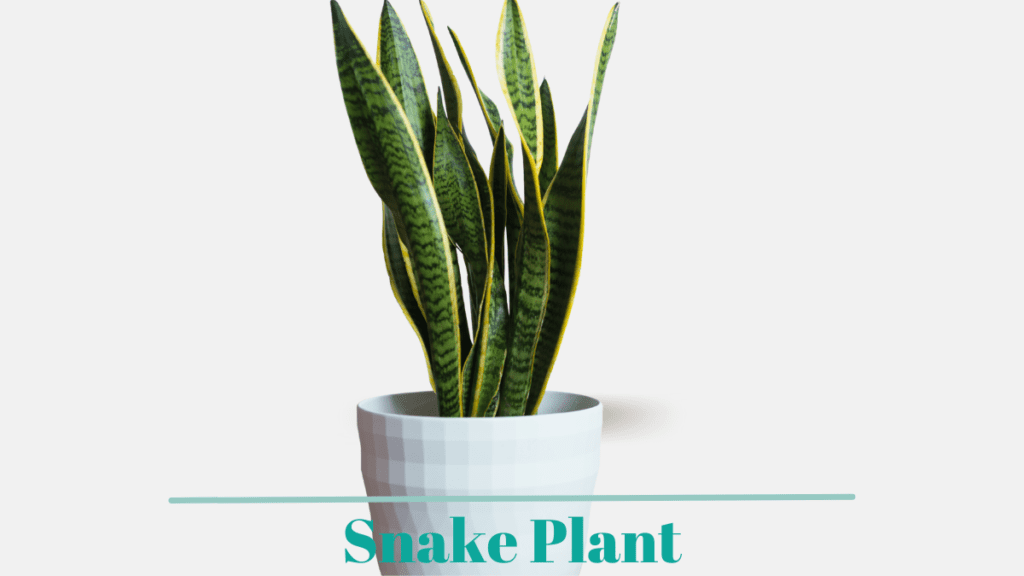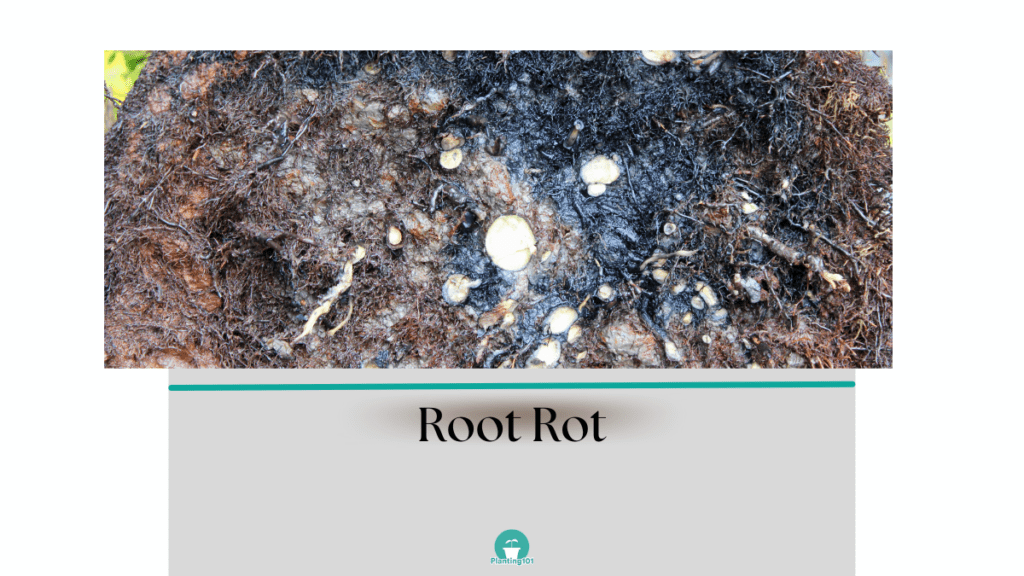Snake Plant or Mother-in-Law’s Tongue (Sansevieria trifasciata) is an easy-to-grow houseplant. It is a tough houseplant that is not easy to kill even if neglected. It is a great starter houseplant for beginners. It is also considered one of the best houseplants for air purifying. Plus the Snake Plant has attractive sword-like leaves which will look great in any indoor space. With so many benefits, it’s easy to see why Snake Plants are among the most popular houseplants in the world. Here are tips on how to care for your Snake Plant.

Snake Plant Infographic

Snake Plant Basics
| Name | Snake Plant or Mother-in-Law’s Tongue |
| Scientific Name | Sansevieria trifasciata |
| Care Level | Easy |
| Light | Bright, filtered light. Can tolerate low light |
| Daytime Temperature | 70 to 80 F (21-26C) |
| Night Time Temperature | 60 to 70 F (15-21C) |
| Water | Moderate Water |
| Humidity | Moderate Humidity |
| Potting | Well-draining, organic, cactus and succulent potting mix |
| Fertilizer | Once a month at half strength |
Snake Plant: Other Names
Snake Plant is also called Mother-in-Law’s Tongue, Bowstring Hemp, Golden Bird’s Nest, Good Luck Plant, and Saint George’s Sword.
Snake Plant: Varieties
Sansevieria patens
Sansevieria trifasciata ‘Black Coral’
Sansevieria trifasciata ‘Laurentii’- One of the best air purifying snake plant
Sansevieria ehrenbergii
Snake Plant: Size
Snake Plant can grow to 3 feet tall. The sword-like leaves of Snake Plants can grow to 2 to 2.5 inches wide.
Snake Plant: Toxic to Pets?
Snake Plants are toxic to humans and pets. Keep your snake plant out of reach. Don’t let children or pets chew on the leaves of the Snake Plant plant because it contains saponins. Saponins is a poisonous chemical- it is used as fish poison!
Snake Plant ingestion can cause vomiting, nausea, and diarrhea. If you see any of these symptoms and suspect ingestion of Snake Plant plants, call poison control immediately! Also, call your pediatrician or vet once you start seeing adverse reactions in children and pets.
Light
Snake Plant: Sun or Shade?
Snake Plant will grow best in bright, filtered light, However, Snake Plant will also do well in low light. Avoid direct sunlight.
Water
How Often Should You Water Your Snake Plant?
Water your Snake Plant only when the soil feels dry. Don’t overwater your Snake Plant.
How Do You Know When to Water Your Snake Plant?
Water your Snake Plant when the soil feels dry. The best way to tell when it’s time to water is by sticking your finger into the soil. During the growing season, stick your finger in the soil 1 inch deep. If the soil feels dry, then it’s time to water your Snake Plant.
In the winter, stick your finger in 1 inch deep. If the soil feels dry, then it’s time to water your Snake Plant. If your Snake Plant is kept at a low light level, you should let the soil dry out completely before watering.
The frequency of watering will be dependent on the type of pot you have your Snake Plant in. Unglazed pots like terracotta are porous and will dry up more quickly than if you have your Snake Plant planted in plastic, metal or glazed ceramic pots. These pots don’t breathe so will retain moisture much longer. The environment will also affect how often you water your Snake Plant. Hot summer days will require more watering (even if your Snake Plant is indoors) while cold, winter days will require less watering.
What Type of Water Should You Use When Watering Your Snake Plant?
Your Snake Plant can be watered with tap water but be mindful of the water temperature that you are using to water your Snake Plant. Don’t use straight cold water from the tap to water your Snake Plant. Snake Plant prefers cool water that is not hot and not cold.
When you turn on the cold water from the faucet add a little bit of warm water. You can also get to this ideal temperature by filling a watering can or pitcher with water and leaving it out overnight until the water is at room temperature.
How Do You Make Sure There is Proper Drainage for Your Snake Plant?
Your Snake Plant needs proper drainage otherwise it might suffer from stem rot. To ensure proper drainage, make sure the pot has drainage holes at the bottom. After watering your plant, don’t let it sit in the puddle of water that has accumulated in the saucer. Empty out the water from the saucer.
Do You Need to Mist Your Snake Plant?
No, you don’t need to mist your Snake Plant. Your Snake Plant is a plant that tolerates dry air well. You don’t need to give it extra humidity in addition to its regular watering.
Do You Need to Wipe the Leaves of Your Snake Plant?
Yes, it’s a good idea to occasionally wipe the leaves of your Snake Plant with a damp cloth to remove any accumulated dust.
Soil
What Type of Potting Mix is Best for Your Snake Plant?
Your Snake Plant needs a well-draining, organic cactus and succulent potting mix.
How Do You Know When To Repot Your Snake Plant?
Repot your Snake Plant when it’s outgrowing its current pot. Repot in a container with a diameter 2 inches larger than the current pot. Make sure you repot your Snake Plant in a heavy pot so it doesn’t topple over. You can also add pebbles at the bottom of the pot to keep it from falling over.
Fertilizer
Do You Need to Fertilize Your Snake Plant?
Your Snake Plant should be fertilized at half strength once a month. Don’t fertilize during the winter months.
What Fertilizer Should You Use on Your Snake Plant?
Use organic fertilizer that is balanced on your Snake Plant
Propagation
How Do You Propagate Your Snake Plant?
Your Snake Plant Snake Plant Plant is easy to propagate. You can propagate your Snake Plant plant by division of the rhizomes or leaf cutting. Below are steps on how to propagate your Snake Plant Plant by leaf cutting.
1. Take a Leaf Cutting of Snake Plant Plant

2. Place the Snake Plant Leaf in Jar of Water
Place the Snake Plant leaf into a jar of water and wait for it to grow roots.
3. Plant Leaf Cutting in New Pot
Once the roots grow, plant these leaf cuttings into a new pot. Water the new plant immediately after planting. Then water every 2-3 days until the roots are established.
4. Place New Snake Plant in a Spot with Bright Indirect Sun
Place your new Snake Plant plant in a spot with bright indirect sunlight. Don’t put it in direct sunlight.
Common Problems of Snake Plant Care
The most common problems that affect Snake Plant are sunburn, mealy bugs, and root rot.
Snake Plant: Looks Wilted (Soil is Wet)
Snake Plant Problem: Your Snake Plant looks wilted even if the soil is wet. Check for root rot by pulling the plant out and examining the roots. If the roots of your Snake Plant plant look mushy (healthy roots are firm) and the roots are gray to black in color, these are telltale signs of root rot.

Cause: Root rot is caused by fungus and is a serious problem for your Snake Plant. Root rot is a result of wet soil due to overwatering or poor drainage.
Solution: When your Snake Plant is afflicted with root rot the chance of survival is slim. Your best course of action is to throw your Snake Plant out and start over with a new plant. This time don’t overwater your Snake Plant and make sure there is good drainage in the pot.
Snake Plant: Fluffy White Growth In Between the Leaves and Stems
Snake Plant Problem: There are fluffy white growths in between the leaves and stems of your Snake Plant.
Cause: Mealybugs are causing the fluffy white growth on your Snake Plant. It is a common houseplant disease.
Solution: To get rid of mealybugs on your Snake Plant, wash your plant with water. You can also use soapy water. Spraying rubbing alcohol on affected areas can also get rid of mealybugs. Horticultural oil and insecticidal soap are also effective in getting rid of mealybugs.
Check out our article on how to make your own homemade pesticides using baby shampoo: How to Make Horticultural Oil and How to Make Insecticidal Soap
Snake Plant: Brown and Black Patches on the Leaves
Snake Plant Problem: There are brown and black patches on the leaves of your Snake Plant plant.
Cause: These brown or black patches on your Snake Plant are sunburn spots. Sunburn spots are caused by too much direct, hot sun on your Snake Plant.
Solution: Move your Snake Plant to a less sunny spot. The sunburn spots on your Snake Plant plant are permanent. The sunburn spots will not turn back to green.
You May Also Be Interested In:
How to Take Care of Haworthia (infograph)

